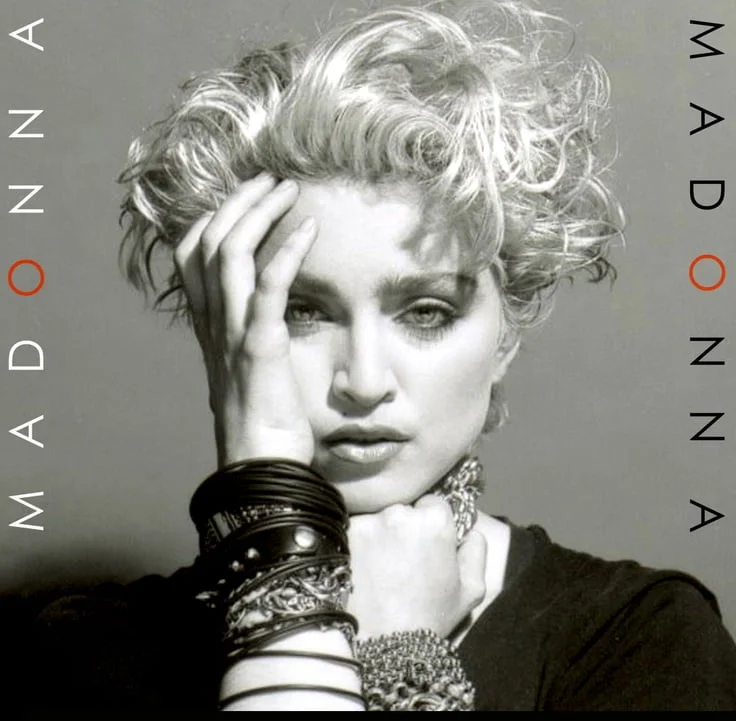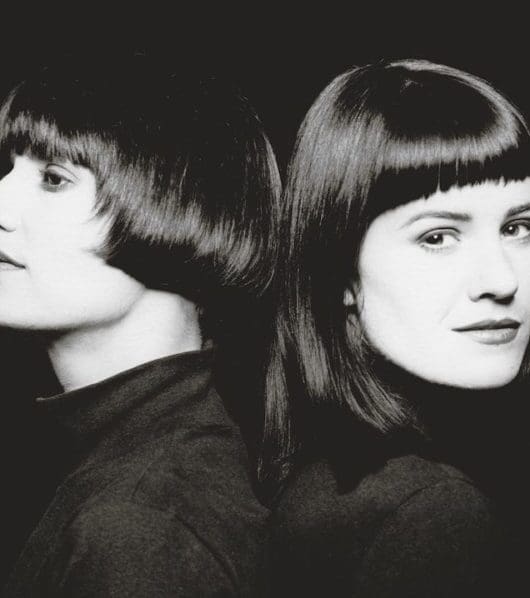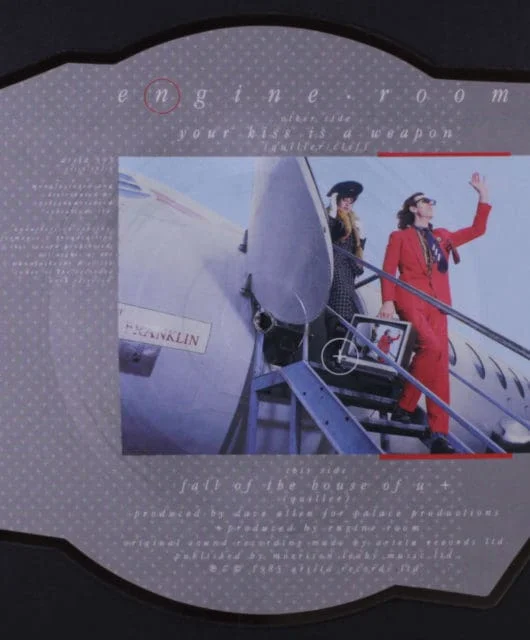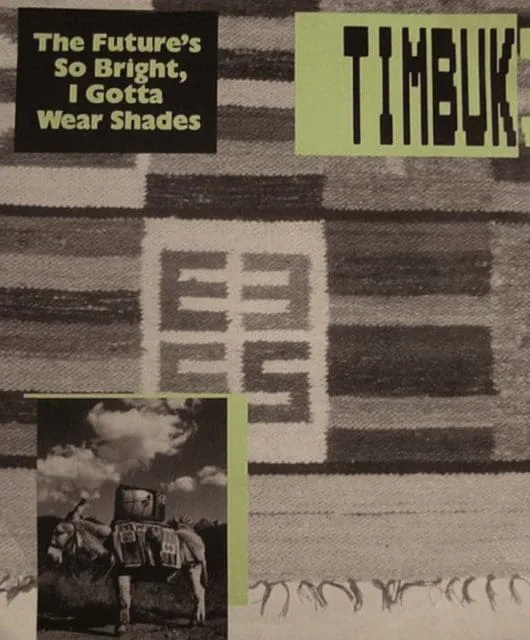The rise of Madonna
By Steve O'Brien | January 29, 2023

Before 1983 few people in America – let alone the world – had heard of Madonna Ciccone. but that was soon to change…
On 9 January 1983 Madonna Louise Ciccone made her first ever television appearance.
Not that many people saw it, though. Dancin’ On Air wasn’t one of those monolithic, fully networked TV shows like Louisiana Hayride (which introduced Elvis to the world) or NBC’s Midnight Special (where Prince made his first appearance) – instead it only ever reached seven East Coast states.
But if you had caught that episode you’d have seen the 24-year-old newbie, alongside two backing dancers, performing her debut single Everybody in front of three school chairs.
It was all a far cry from the lavish stage presentations that she’d become associated with, but hey, everybody – even the biggest popstar in the world – has to start somewhere.
1983 would be the year Madonna became a star, but little in showbusiness is genuinely overnight. 1983 may have been the year she made her first television appearance and released her debut album, but the road to that moment had been a long one, starting with her move to New York City in 1978.
Madonna was 20 when she dropped out of college in Michigan and upped sticks to the Big Apple.
“It was the first time I’d ever taken a plane, the first time I’d ever gotten a taxi cab,” she recalled. “I came here with $35 in my pocket. It was the bravest thing I’d ever done.”
After finding accommodation in the Alphabet City neighbourhood of the city’s East Village, Madonna would pay her rent by working variously as a waitress and posing nude for art classes, “staring at people staring at me naked,” as she put it.
She also signed up to the Alvin Ailey American Dance Theatre, while also studying dance under the tutelage of esteemed choreographer Martha Graham. But dancing alone wasn’t a big enough dream for the young Madonna. She lasted just a few months with the Pearl Lang Dance Theatre before she told friends she was leaving to become “a rock star”.
While New York City was a place of opportunity for anyone with stars in their eyes, it was still a fairly dangerous place at that point in time. One night, on her way back from a dance rehearsal, she was raped at knifepoint on a Manhattan rooftop.
Recalling the incident years later, Madonna said that she found the ordeal “a taste of my weakness, it showed me that I still could not save myself in spite of all the strong-girl show.”
In ‘79, Madonna began an affair with a musician, Dan Gilroy. Eleven years her senior, they’d met at a party and before too long, Madonna had moved into the disused synagogue in Queens where Gilroy lived with his brother Ed.
While the brothers were out working (they waited tables during the day and performed comedy at night), Madonna stayed at home, practising drums and writing songs. Soon, she and Gilroy had formed a band, Breakfast Club, with Madonna singing as well as playing guitar and drums in this rough and ready, ska-influenced outfit.
But Madonna was never meant to be in a band. Though she looked up to some of those pouty punk-era pioneers such as The Pretenders’ Chrissie Hynde and Blondie’s Debbie Harry, it was as a solo star that Madonna had dreams.
With Breakfast Club behind her, Madonna travelled to Paris to work as a backing dancer to French disco artist Patrick Hernandez, and lensed a low-budget erotic movie, A Certain Sacrifice.
Co-written and directed by Stephen Jon Lewicki, Madonna plays Bruna in the film, a Lower East Side resident who lives with three ‘love slaves’ – one man, one cis woman and one trans woman. Madonna was paid just $100 for her clothes-shedding efforts.
A Certain Sacrifice didn’t see light until 1985, when it was finally released on VHS to cash in on Madonna’s now skyscraping stardom. The singer tried to bury the film, offering Lewicki $5,000 for the rights.
Turning her down, Lewicki invited Madonna to a screening at his apartment, where afterwards, according to the director, she screamed “Fuck you!” and stormed out. It was later marketed as “The film [Madonna] tried to ban.”
By early-1981 Madonna had become a fixture at midtown Manhattan’s Music Building, having formed the band Emmy (Madonna’s nickname) alongside one-time beau, Steve Bray.
Before long, Emmy had caught the attention of local entrepreneur Camille Barbone, of Gotham Management, but it was Madonna and not the band that Barbone was interested in.
Firing every member save for songwriter Bray, Barbone became Madonna’s manager, and began grooming the 22-year-old for stardom.
Having inked a deal with Gotham, Madonna was now raking in £100 a week – not bad in 1981 for a former waitress – plus an apartment and unlimited access to a recording studio.
Under Barbone’s tutelage, Madonna penned a number of songs but the partnership was short-lived, and in February 1982, they parted ways.
Madonna continued to write with Bray, however, and together they recorded a demo using a Boss drum machine and some synths, influenced by the sounds that were dominating New York’s clubland at the time.
Madonna was a regular face at those clubs, not just to party the night away, but to also push her records – or tapes in this case – into the hands of DJs.
- Read more: Remembering Truth Or Dare
One night, at nightclub Danceteria on 30 West 21st Street (coincidentally the location for the disco scene in the Madonna-headlining 1985 film Desperately Seeking Susan), she met DJ Mark Kamins, persuading him to spin her latest song, Everybody.
“I threw it on the cassette,” said Kamins, who died in 2013, “and it worked.” Kamins – who later became Madonna’s boyfriend – sent a copy to Sire Records president Seymour Stein.
Suitably impressed, the music mogul signed Madonna to record Everybody as a single. But though it failed to break the Hot 100, the song would prove a smash on the dance chart, prompting Sire to offer her an album deal.
Madonna began 1983 promoting Everybody on TV and also in the UK, where she was booked for a run of nightclub appearances. In March, her second single, Burning Up, was released. The song had been on the tape – along with Everybody and Ain’t No Big Deal – she’d given Kamins that night at Danceteria.
For the new recording, Sire’s A&R man Michael Rosenblatt pointed Madonna towards producer Reggie Lucas. Lucas had been a jazz guitarist before moving into music production, playing with Billy Paul in the early 1970s and later with Miles Davis.
The single was released on 9 March 1983. Like Everybody, it failed to prick the Hot 100, but did peak at No.3 in on the Hot Dance Club Play chart, where it remained for 16 weeks. By September 1983 the single had shifted more than 150,000 copies.
Sire commissioned Steve Barron, who’d helmed the videos for Michael Jackson’s Billie Jean as well as Toto’s Africa, to direct the promo for Burning Up. Barron initially refused the offer, believing the song “didn’t have the atmosphere” he was looking for and wouldn’t know what to do with it.
Madonna, who’d loved the Billie Jean clip, was keen on Barron to direct and badgered the filmmaker to come and meet her.
“I went to New York to meet with [Madonna], begrudgingly, and showed up at an address at SoHo, which turned out to be a squat basically,” Barron recalled for the book, I Want My MTV: The Uncensored Story Of The Music Video Revolution.
“Madonna was scantily clad, working out to a massive disco track. She was charismatic. She kept putting her head down on the table and talking to me, very flirtatious, and that gave me the idea for the scene in Burning Up, where her face is on the road.”
- Read more: The videos of Madonna
Filming took place over two nights in Los Angeles, with Mads wearing a white mini-dress, crucifix earrings and black typewriter belts as bracelets.
“It was a bit of a mish-mash,” Barron recalled to Rolling Stone. “She trusted me, definitely. She handed it over, which she probably shouldn’t have done. But she wanted to be very much in control of how she looked and how she was dressed.”
Though Madonna had felt let down with Lucas’ work on Burning Up (the producer had radically altered the song’s structure from the original demo version), Sire were over the moon with its success, and booked him to oversee Madonna’s debut album.
Inevitably, problems arose during its making, with Madonna unhappy with the final results, believing Lucas had used too many instruments and failed to listen to her ideas.
Lucas walked away from the album before it was finished, with DJ John ‘Jellybean’ Benitez (who’d produced a remix of Burning Up) hired to redo three of the tracks, as well as produce Holiday from scratch.
- Read more: Making Madonna’s Like A Virgin
“Madonna was unhappy with the whole album,” Benitez remembered in an interview with Music Musings And Such, “so I went in and sweetened up a lot of music for her, adding some guitars to Lucky Star, some voices, some magic… I just wanted to do the best job I could do for her.
“When we would play back Holiday or Lucky Star, you could see that she was overwhelmed by how great it all sounded. You wanted to help her, you know? As much as she could be a bitch, when you were in a groove with her, it was very cool, very creative.”
On top of Everybody and Burning Up, a further three singles were released from the self-titled album, Holiday, Lucky Star and Borderline. The LP would peak at No.8.
While Everybody and Burning Up had been dance hits, the album turned Madonna into a bona fide pop star. A few months after Madonna’s release, the singer was approached by film producer Jon Peters who asked her to play the part of a club singer in the movie Vision Quest.
The film, which was released in February 1985, would be Madonna’s first role in a major motion picture (as much as Stephen Jon Lewicki would have liked to believe it, A Certain Sacrifice didn’t count) and featured the Material Girl performing the songs Crazy For You and Gambler.
When the movie was released outside of the US, some territories retitled it Crazy For You, to capitalise on Madonna’s new-found fame.
Though 1984’s Like A Virgin would be the album that would send her career stratospheric, 1983 was the year in which most people first heard of Madonna Ciccone.
It was a year of transition for the singer, leaving behind the last vestiges of that underground dance culture that she came from. From here on in, Madonna would be a mainstream popstar, albeit one with a fair amount of edgy, counter-culture cool.
- Want more from Classic Pop magazine? Get a free digital issue when you sign up to our newsletter!

Steve O'Brien
Steve O’Brien is a writer who specialises in music, film and TV. He has written for magazines and websites such as SFX, The Guardian, Radio Times, Esquire, The New Statesman, Digital Spy, Empire, Yours Retro, The New Statesman and MusicRadar. He’s written books about Doctor Who and Buffy The Vampire Slayer and has even featured on a BBC4 documentary about Bergerac. Apart from his work on Classic Pop, he also edits CP’s sister magazine, Vintage Rock Presents.www.steveobrienwriter.com





